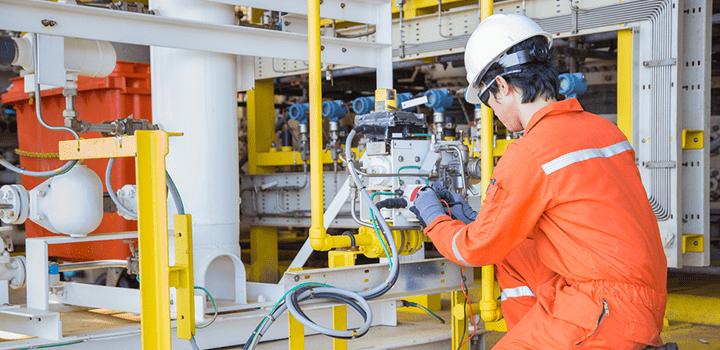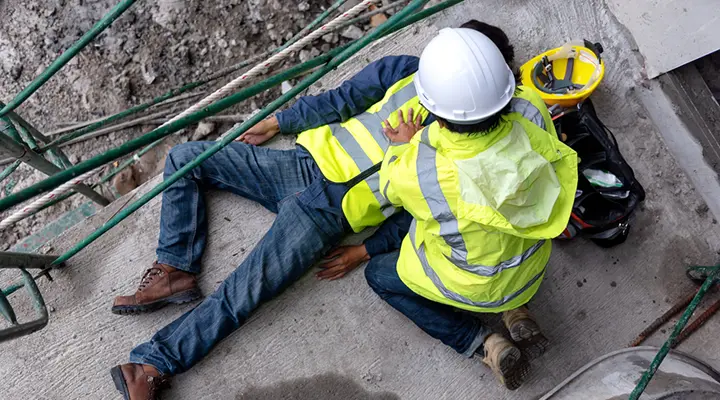Every year in the UK, people are injured or suffer ill health due to their work activities. In 2021/22 Health and Safety Executive (HSE) statistics show that 1.8 million people were suffering from a work-related illness. 914,000 workers suffered from work-related stress, depression or anxiety, and 565,000 workers sustained an injury at work. This resulted in a massive 36.8 million working days lost for UK companies.
Most injuries can be avoided if suitable health and safety controls are put in place to minimise the risks posed by workplace hazards. Effective health and safety practices, and workplace culture play a key role in reducing incidents.
Health and safety in the workplace needs to be a key priority in order to safeguard staff and reduce the risk of preventable illness, injuries and even fatalities. This article explains how you can improve health and safety in your workplace and reveals five common health and safety mistakes.
Ways to improve health and safety

1. Assess the risks and hazards
Employers must assess and control the health and safety risks in the workplace. Not only is it a legal requirement, but it is also an essential part of establishing and maintaining effective health and safety measures in the workplace.
To assess the risks and hazards:
First, consider who could be harmed. This may include employees, contractors, members of the public, visitors and passers-by. Pay particular attention to those who may be more vulnerable such as young or inexperienced workers, pregnant women, people with a disability, elderly workers or foreign workers.
Next, consider what might cause harm to people in the workplace. Some workplace hazards may bring immediate danger i.e. cause an accident. Other workplace risks may harm individuals’ health over a long period of time. Think about hazards to health, such as manual handling, use of chemicals, excessive levels of noise or work-related stress.
Assess the level of risks. Once you have identified the people who may be at risk and the hazards, decide how likely it is that someone could be harmed and how serious it could be.
When you have assessed the risks of harm to people in your workplace, you will need to decide how to eliminate those risks, or control them if they cannot be eliminated. Then, you should take action to reduce those risks.
2. Train staff in health and safety
Training is an essential part of ensuring that everyone understands the safety processes and procedures in place and can do their job safely.
Make sure that all your employees receive adequate training, so that they have the required knowledge, skills and competence to carry out their work safely and use any necessary equipment, tools and PPE correctly. Online Health & Safety training can be a cost effective and efficient way to train your workforce. Courses are self-paced and can be taken anywhere, at any time.
Employers must inform all staff about first aid and fire evacuation arrangements in the workplace, so they know exactly what to do if an emergency arises. This will help them to safeguard their own health and safety as well as that of colleagues, visitors and the general public.
You need to be sure that all employees actually understand the information and training they receive. Some employees will need adjustments to the information and training. It is important to consider language or literacy barriers and any individuals with disabilities who may need additional support to fully understand training and procedures.
3. Communicate with your workforce
Another part of maintaining good health and safety in the workplace is communicating with your workforce.
Employees who are directly involved in work activities may spot health and safety hazards you have not noticed. Make any necessary arrangements to allow employees to raise any concerns and share their own ideas on improvements to health and safety in the workplace. Encourage them to communicate their concerns to you directly, via a safety representative, or during regular meetings on workplace safety. Listen and take their concerns into account when making decisions regarding health and safety at work. This will show employees that the management team cares about their safety and motivate them to contribute further to workplace safety.
4. Keep up to date with health and safety records
It is important to keep health and safety records up to date for legislative reasons. However they also help to ensure that an organisation is maintaining correct safety procedures and processes.
Keeping health and safety records up to date and organised allows you to keep track of what needs to be done and when. For example, health and safety training records allow you to track whether all employees have completed all mandatory training. Records also highlight when there is a requirement for refresher training.
Records of machinery and equipment maintenance indicate when the next maintenance is due. Fire safety records allow you to ensure that staff inspect and maintain alarm systems, emergency lighting, extinguishers and fire doors regularly. Records help to ensure that your staff carry out health and safety checks on time.
Also, keeping up to date with health and safety records enables senior managers to monitor health and safety performance. Risk assessment reviews make sure the controls identified have actually been implemented and are working. If changes have been made in the workplace, this could lead to new risks or reduce the effectiveness of the controls that are in place.
Our online risk assessment training course explains the essential steps in carrying out effective workplace risk assessment. The course helps employers meet their legal duties under health and safety legislation.
5. Provide quality PPE
Personal Protective Equipment (PPE) helps to minimise worker’s exposure to a variety of hazards at work. PPE can reduce the risk of illness and injury. For example, PPE protects employees from falling objects, splashes of corrosive liquids, excessive noise or breathing in toxic gas, fume or dust. To safeguard employees against such hazards, you must provide them with appropriate PPE. This may include gloves, foot and eye protection, protective hearing devices (earplugs, muffs), hard hats, respirators or full body suits.
You need to ensure that PPE is fit for purpose, maintained and stored properly, and you must provide employees with instructions on how and when to use it correctly.
6. Use safety signs
Signs are an effective way to quickly and clearly communicate important safety information. They are usually straight-forward and provide information in direct wording or images, which makes them easy to understand. For example, signs can warn people about potential hazards or show proper procedures. They indicate mandatory protective equipment and they provide information on prohibited behaviour that may cause danger. They can also provide directions to emergency exits or first aid kits.
You should place signs in areas where they will be visible to all workers, such as in high traffic areas like hallways, near equipment and above entrances and exits.
7. Support staff with stress and mental health
Stress is a major health hazard in the workplace. In 2021/22, 51% of all work-related ill health cases were due to stress, depression and anxiety.
Workplace stress for prolonged periods of time can affect workers’ physical and mental health. This can lead to long term sickness or contribute to workplace accidents as workers may struggle to concentrate and fail to follow safe working practices. Employers are responsible for the general safety and wellbeing of their employees while they are at work so it is essential to safeguard both physical and mental health of your employees.
To support your employees’ mental health, identify stress hazards in your workplace, establish controls and make adjustments. This should be a part of your risk assessment.
5 common health and safety mistakes

1. Lack of communication
Poor communication contributes to workplace accidents. If employees ignore hazards they spot, whether it is boxes obstructing walkways, a spillage, an unstable ladder or a broken piece of equipment, an action to minimise the risk may not be taken soon enough to prevent accidents.
2. Failure to invest in training
Failure to invest in health and safety training increases risks in the workplace. Many accidents in the workplace occur due to human error. If employees are not aware of the specific hazards that their work activity introduces, or they do not know how to complete a task safely, they may cause harm to themselves or others.
For example, if an employee is not aware of the correct way to lift a load, they may put themselves at risk of a back injury or other musculoskeletal disorders (MSDS). Or if they are not aware of how to work safely at height, they may fail to take simple precautions to prevent objects from falling. This can cause severe injuries to people in their drop zone. By not training employees on potential risks and safe work practices, you are putting their health and even their lives at risk. In more extreme circumstances, this can lead to serious injury or fatalities in the workplace.
3. Taking shortcuts
When staff are under pressure to meet deadlines or daily targets at work, they may start looking for easier and faster ways of doing things, leading to them taking shortcuts.
For example, they may lift quickly, use tools improperly, neglect cleaning tasks, place objects in emergency exit paths, skip breaks or ignore near misses just to complete a task on time. However, taking shortcuts causes risk to the individual who is taking them and reduces the overall safety of the workplace.
4. Neglecting maintenance
Having to work with inadequate or damaged equipment and machinery can cause serious injuries to employees. If an employee uses equipment or machinery that is unreliable or faulty, they may be struck by ejected parts of equipment or materials. Broken or missing safety guards could expose sharp edges which can cause cuts and severing injuries. It is essential to ensure that all equipment and machinery in your workplace is regularly inspected, tested and maintained to reduce the risks of serious injury.
5. Using the wrong tool for the job
Many health and safety incidents occur due to workers using the wrong tool for the job. When using tools in an unintended way, safeguards are likely to be ineffective. This increases the risk of injury. Investing the time and money into making sure the right tools are available for a given job will help keep people safe and will also ensure a job is done efficiently and correctly.



